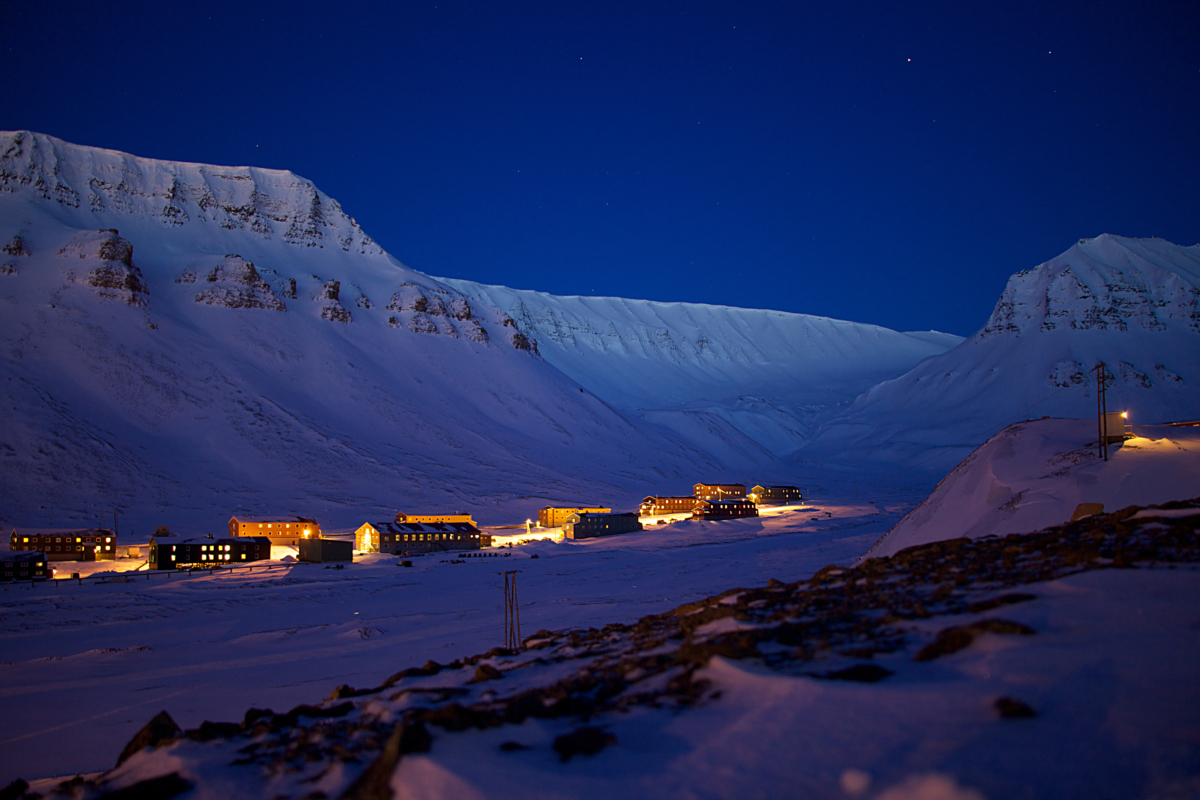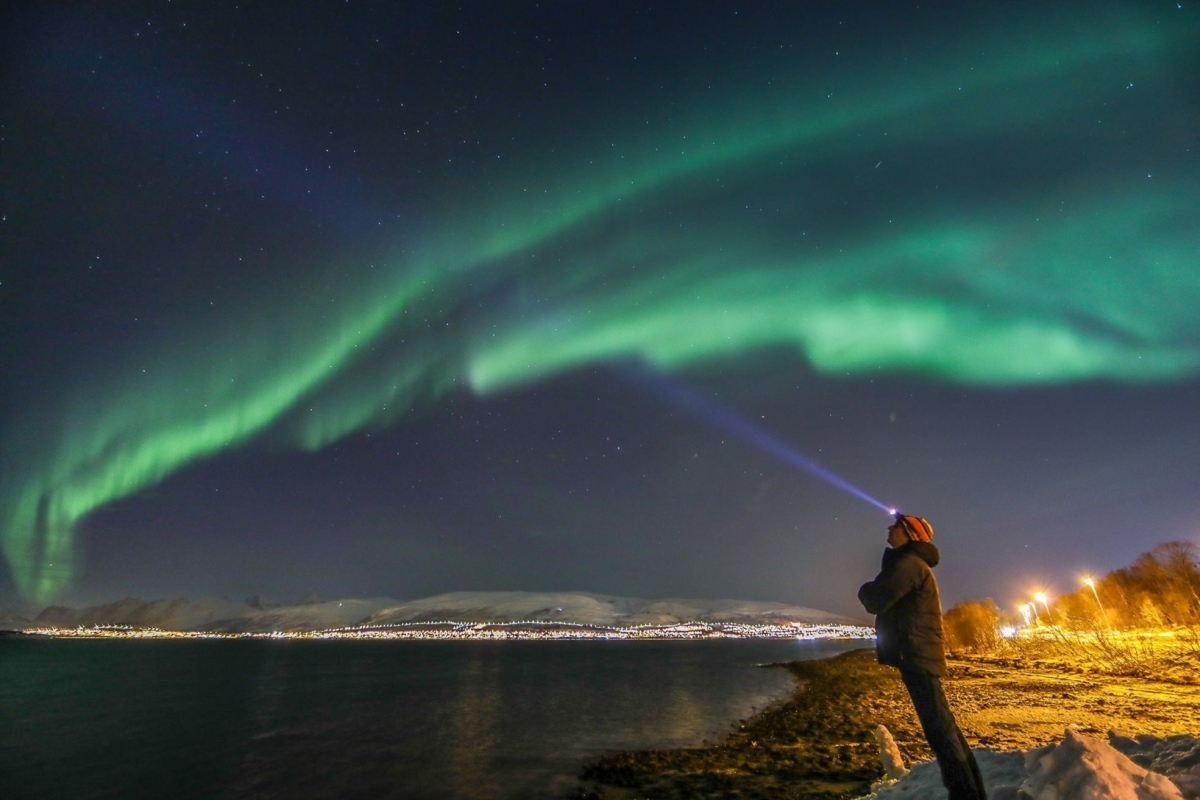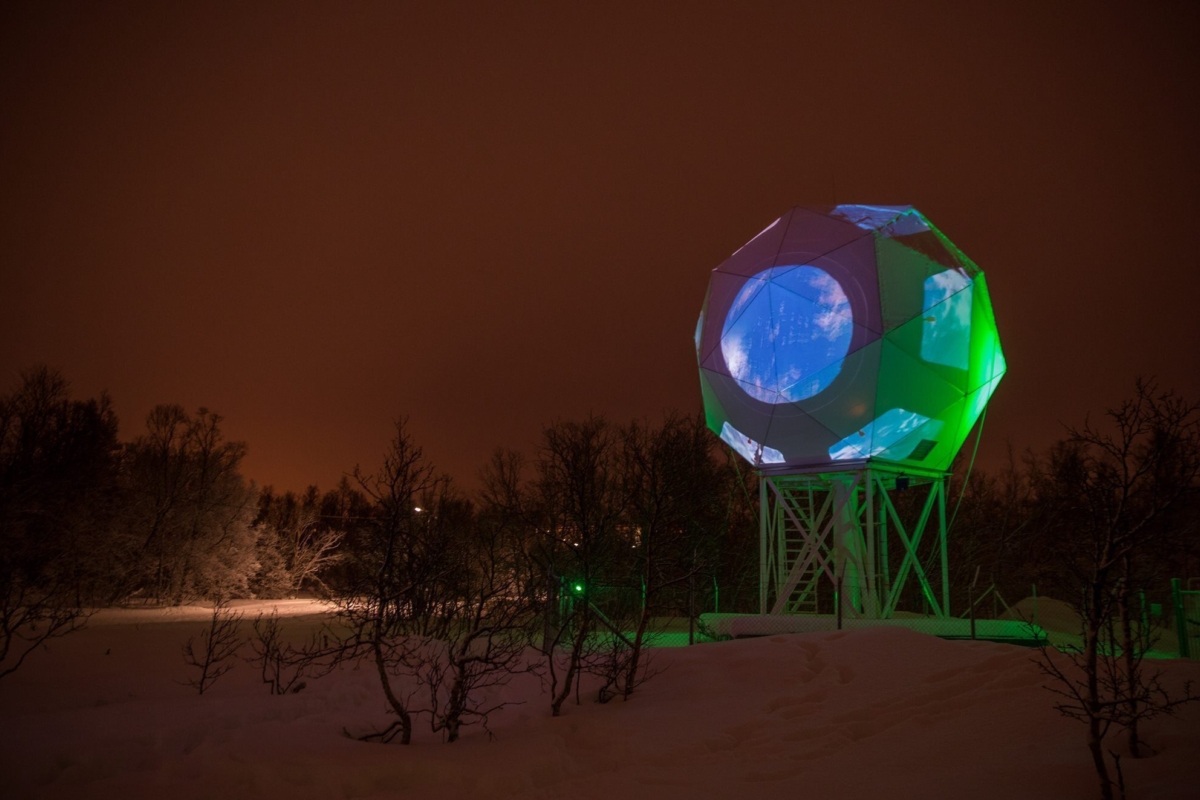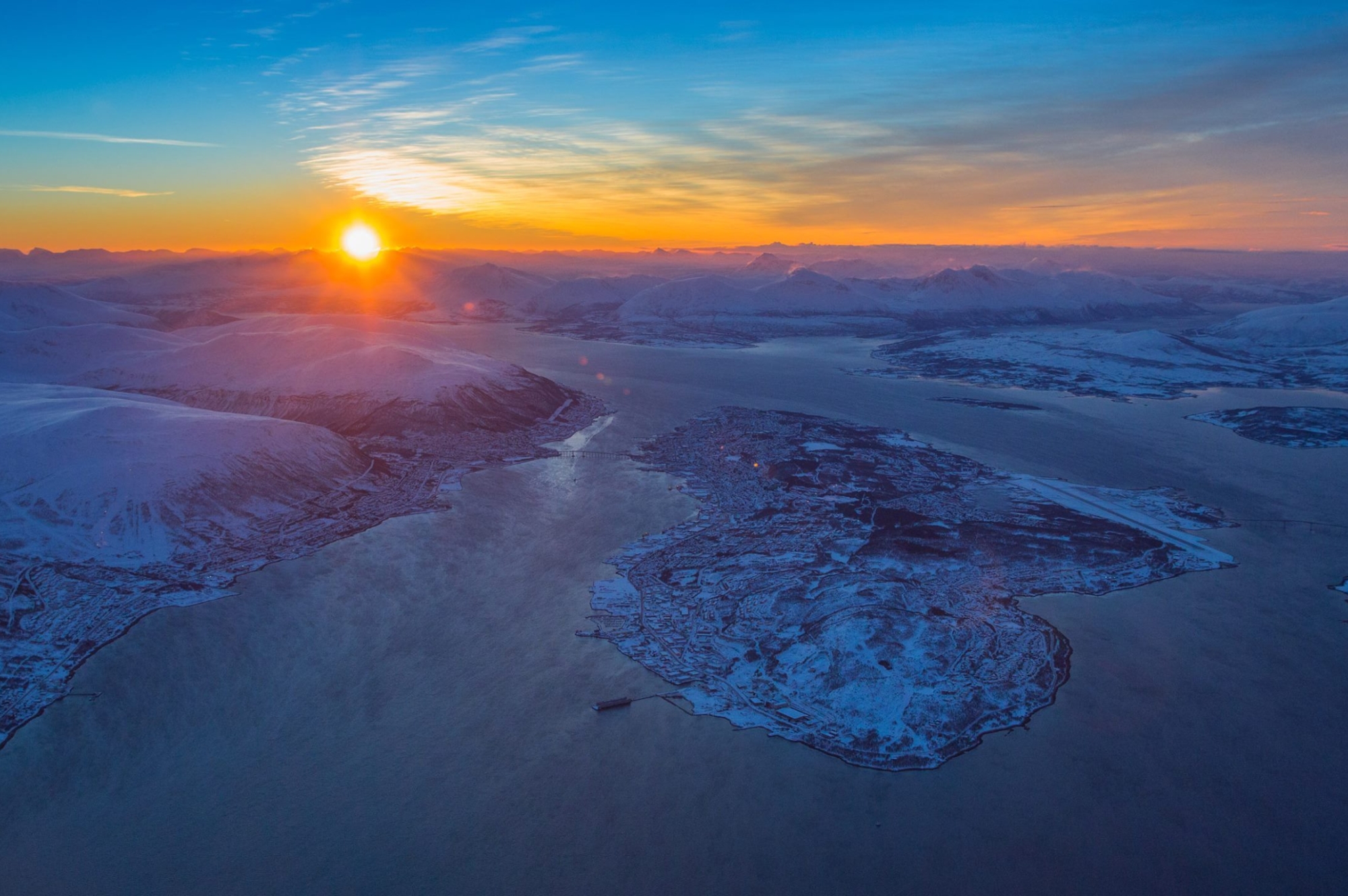The amount of light also varies with the seasons. During the period of midnight sun, during the summer, there is 24-hour daylight for 2 ½ months in the northernmost part of mainland Norway and for up to 4 months in Svalbard.
In contrast, during the dark wintertime (mørketid, in Norwegian) the sun never crests the horizon for up to 2 months in the northernmost part of mainland Norway and for 3 months in Svalbard. In between these two extremes, there are transitional periods of decreasing daylight in the autumn (heading towards winter) and increasing daylight in late winter (heading towards spring), also offering a broad variety of spectacular shades of light and a unique, Arctic glow.

Polar Night
The phenomenon of Polar Night occurs during the period when the sun is at least 6 degrees below the horizon. This period of 24-hour darkness only occurs at the northernmost latitudes, like Svalbard, and lasts from mid-November until the end of January, with transitional periods of twilight on both ends. This twilight, offering magnificent shades of purple and blue, is also experienced over the noon hour during the dark period further south in Northern Norway. These breathtaking mid-day moments, called the Blue Hour by the locals, makes the dark wintertime seem a bit less dark. It is utterly unique and very special to capture on film.
The dark season is also the ultimate season for seeing and filming the Northern Lights (Aurora Borealis).

Northern Lights (Aurora Borealis).
Northern Norway and Svalbard are among the best places in the world for seeing and filming the Northern Lights (or Aurora Borealis, which means 'dawn of the north.)
In Roman mythology, Aurora was the goddess of the dawn. In old Norse mythology, the Northern Lights were seen as the Gods’ earthly manifestations which brought power. In Sami myths, however, the Northern Lights were something to fear and respect. There was also a belief that the Northern Lights were actually the souls of the dead and should not be spoken about or looked at.
This incredible celestial and mythical phenomenon is only visible when it is dark. Northern Lights are actually the result of collisions between electrically charged particles thrown off of the sun that enter the earth's atmosphere. The lights are seen above the magnetic poles of the northern and southern hemispheres. In the south they are called Aurora Australis.
Auroral displays like the Northern Lights appear in many colours, but pale green and pink are the most common. Shades of red, yellow, green, blue, and violet also occur. Variations in color are due to the types of gas particles in the Earth's atmosphere that are colliding with the sun storms.
The Northern Lights appear in many forms, from patches or scattered clouds of light to streamers, arcs, rippling curtains or shooting rays that light up the sky with an eerie glow.
Northern Lights can be seen from late August to April.

Northern Lights Research
Scientific observation and research on the Northern Light has a long history in Northern Norway. Today, scientific exploration of the Northern Lights and the upper atmosphere takes place at an international geophysical research center located 20 km from Tromsø and run by The Eiscat Scientific Association. UiT The Arctic University of Norway in Tromsø is involved in Space Physics research here as well. There is also an international scientific Northern Lights observatory in Svalbard called The Kjell Henriksen Observatory (KHO) and run by the University Centre of Svalbard (UNIS). They provide a regular Aurora forecast.
You can read more about the Northern Lights here
